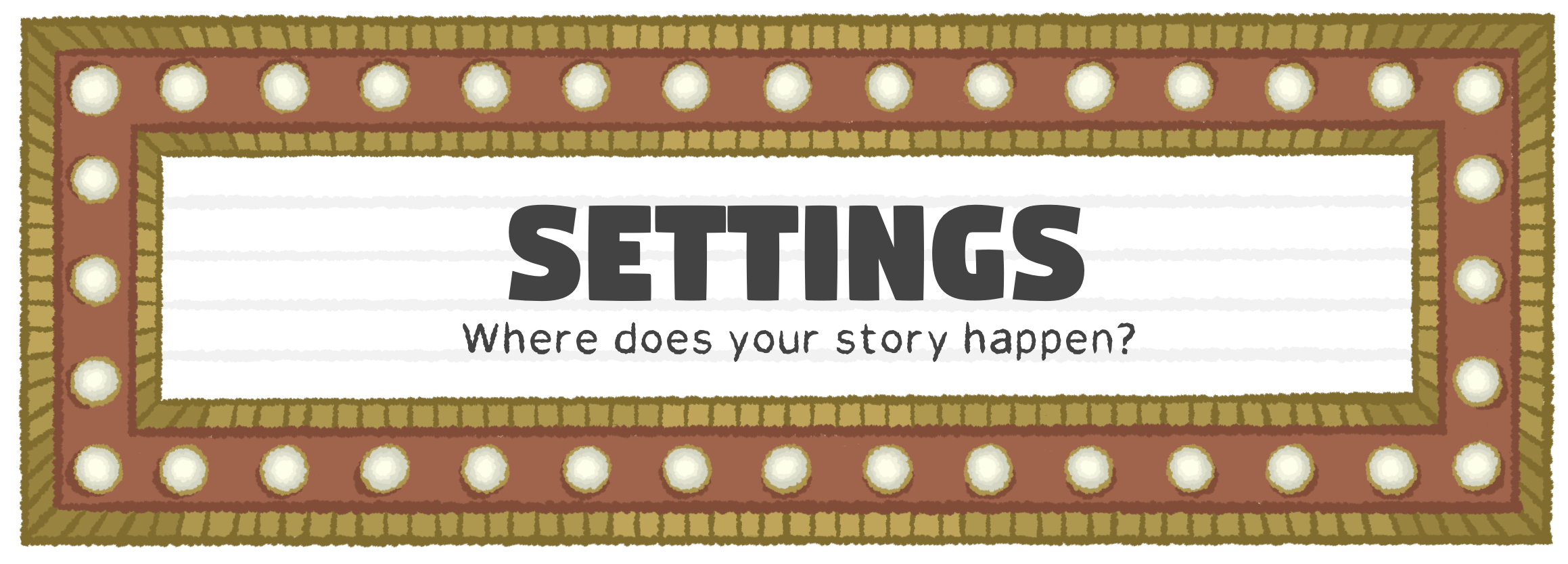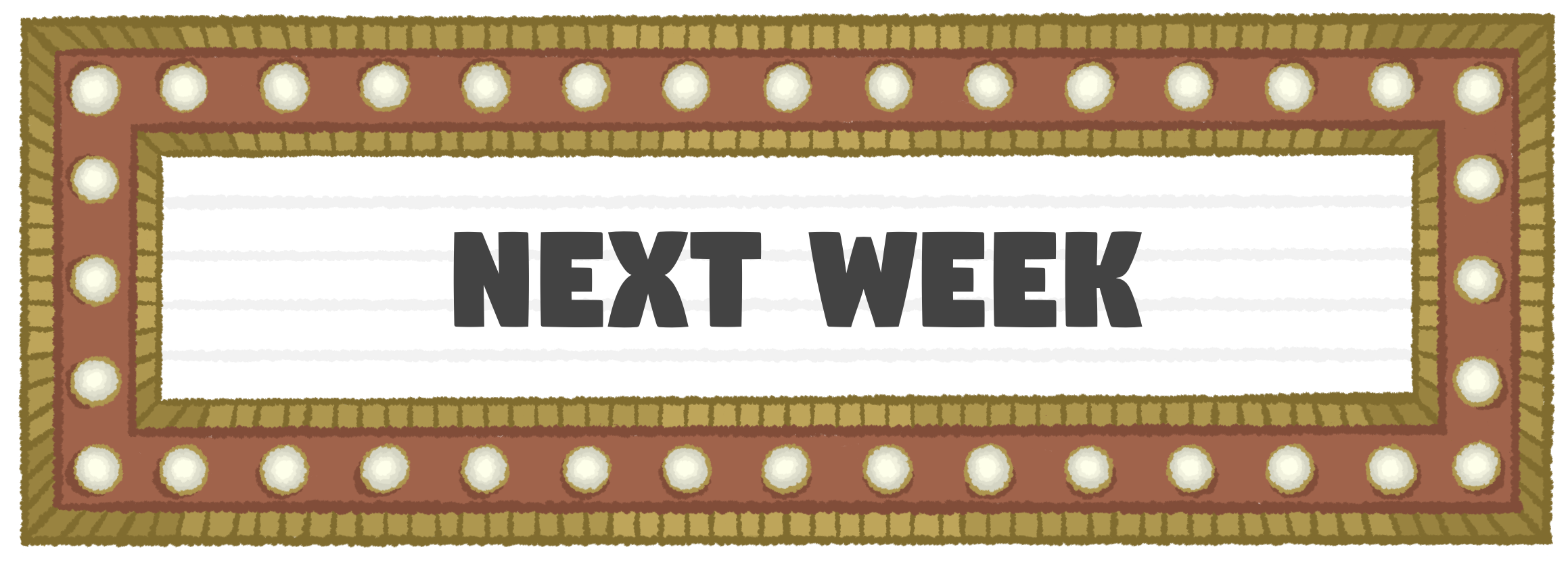When I'm ready to start world building, this is where I have to be really mindful. I, yes, technically I am a god, but really I'm a god who's serving the audience. Which is a strange job description, but there's actually a really good term for it. It's called tour guide! You are a tour guide for your setting.
By thinking of myself as a tour guide for the world that I'm building, I can stay focused on the story that I'm trying to tell. That's how I learned to stop researching sewage systems that ultimately really didn't come into my story that much. And all of the answers that I come up with can be reflected in the set that I build! Here are some of my favorite ways to design the world that I want to build.
I think about the population. Demographically, who lives here? What different types of groups? Different ethnicities? Different cultures? More youngs? More olds? How does this setting shape their identity? Because the olds who live in Florida are pretty different from the olds who live in New York, and very different from the olds who lived back in Eastern Europe, once upon a time. So the setting shapes their identity, and their identity can in turn shape the setting. By figuring out these demographics, that makes it easy to come up with who the background characters are, but also when I need more supporting characters, I can get a sense of who is around to spare!
And once I have these demographics figured out, I can start thinking about how they live their lives in this setting. Their routine, the rules they live by, the resources at their disposal, and what kind of era they're living in.
For example, let me see if I can do this from scratch. A while back I had an idea for a fantasy, and the working title was Gollum Town. Because I love, in Lord of the Rings, how the Ring has an addictive quality & it slowly drives you mad. And I have grown up with the tradition of Fiddler on the Roof teaching me that, “Money is the world's curse!” So I thought it would be a funny idea if— as like a parody of capitalism— what if our currency was like the One Ring? So the more money you collect, the more you become a selfish little goblin monster. As a result, the ruling class are all Gollums! And the middle class are sometimes chill, but sometimes have Gollum tantrums. And the underclass are still humans, but suffering exploited humans. Humans treated as less than human by the Gollum 1%.
So I can start thinking about their routines. How do all of these different groups spend their day? How do they normally use the setting? How have they shaped the space surrounding them? I imagine the downtown of Gollum Town is nothing but Scrooge McDuck money vaults, and gentrified restaurants. And the streets are basically war zones, because all of the rich Gollums are paranoid that the other Gollums are going to do a war raid on their Scrooge McDuck money vaults. All of the service people have to commute in because they can't afford to live downtown. All of the service workers have to commute in through the war zone on the streets of downtown to their individual gentrified restaurant amid the Scrooge McDuck money vaults. So maybe their commute is guarded by troops, who are usually pretty good at protecting the service workers, but sometimes a Gollum gets really jealous & they really launch an attack on another Gollum and… y'know, it's just working in the city, what can I tell ya? By thinking about the routine, I can start imagining battle damage on the Scrooge McDuck money vaults. I can imagine security checkpoints along the trail. I can ask myself, what sort of gentrified food does a city full of Gollums want to eat? Is it rabbitses? Are they raw and wriggling?
So I can get a lot from the routine and I can get even more from the rules. How are characters expected to behave in the setting? What happens if a character deviates from the norm? Are they punished? Are they corrected? Are they rehabilitated? For example, the rules of Gollum Town would have to be very carefully balanced. If the allegory is that it's the 1%, the elite who are ruling the world, then they can get their hands on nukes and my story could be over before it even gets started. So I would need to figure out some plan of mutually assured destruction that we can have in Gollum Town that would keep the story alive and around for long enough.
But rules are about more than just what I can't do with the story, it's a lot about what I can do! If we agree that a story is fundamentally about its conflict, the protagonist wants something badly… but they have trouble getting it, then a rule is the boundary that gets crossed along the way. So for example in Gollum Town we've got this demilitarized zone where the service workers into the downtown can, in theory, safely commute to work every day. I'm not exactly sure if there's such a thing as a Gollum City Council? It's probably more like corporate treaties, corporate ceasefires? But what's the code of honor that all of the warring Gollums have? Well let's say that this is the voice of experience. This rule is the voice of experience. Once upon a time, the Gollums did not see service workers as a protected endangered class and they really culled the population a little too much. But then there was no one to serve them. There was no one to import everything they want. So the Gollum population took a hit and they realized, for their own continued survival, try not to cull the service workers.
By coming up with that rule I can now really clearly start thinking about the resources of the world (in this case, the service workers), and the era of the world. Let's talk about resources first. What does the setting produce in abundance, and what does it lack? That can help us figure out what to put in the space. Sometimes a resource is a traditional thing like lumber or water, but it can get more abstract than that. It can be the service workers in Gollum Town, the endangered service workers in Gollum Town. We're trying to get the population back up! Conserve the service workers!! To be honest with you, the research I've been doing into resources, when I watch the Empire Strikes Back, I kinda think the force counts as a resource. In a sense, both Fiddler on the Roof and Pride and Prejudice have too many unmarried daughters. I'm not saying it to objectify the characters… it's just a thing that the setting has a lot of! And if you're building a set for a house with five daughters, it's going to look very different from a set of a demilitarized zone where service workers commute every day to Gollum Town.
And the last way I think about world building is with the era. I'm asking myself when the story takes place. And the trick to this is comparing & contrasting this era with another era in the location's history. For example, in Gollum Town, they used to hunt the service workers but now they don't anymore. It nearly drove both groups to extinction. So maybe there's part of Gollum Town that got burned down in a big riot, before the story began.
The ruins of a Scrooge McDuck Money Vault is a pretty interesting set! I didn't know we'd be talking about that set today. I didn't have that a few minutes ago. I got it by thinking about the world building, by thinking about the population, the different groups who live there, the routine, how they spend their time every day, the rules in the setting, the norms, the way they're expected to behave, the resources at their disposal, what's abundant around them, what do they lack? And the era, when the story takes place, comparing & contrasting it with a different era in the location's history.
And that's how I approach world building. Now it's your turn to play God! Scroll down and design your own settings! I'm excited to see what you come up with!



